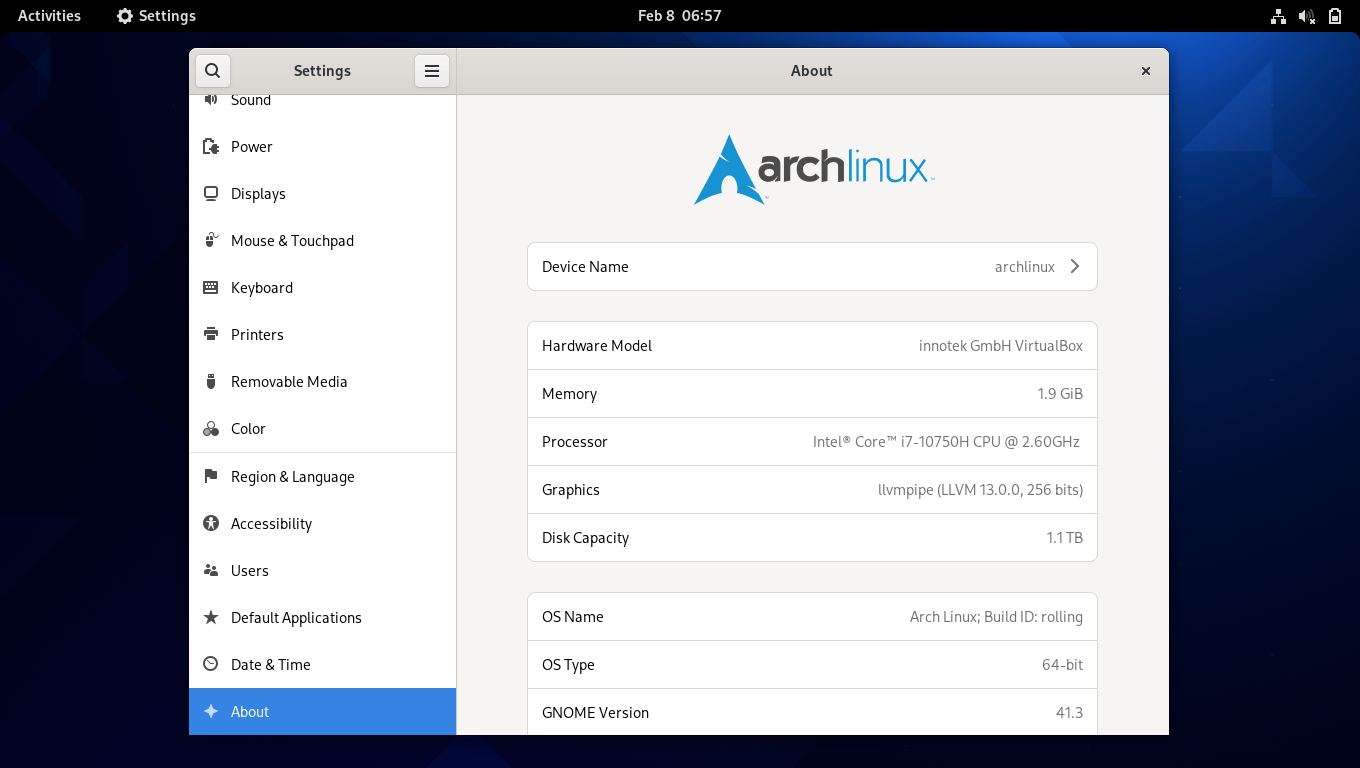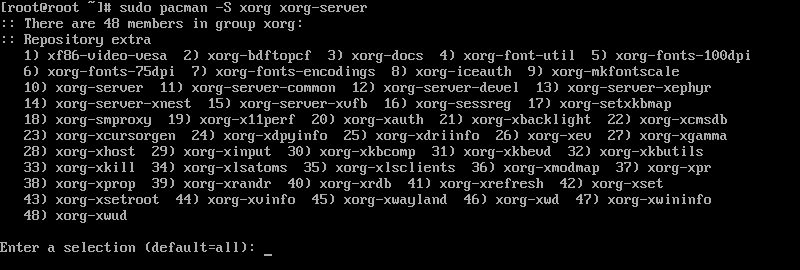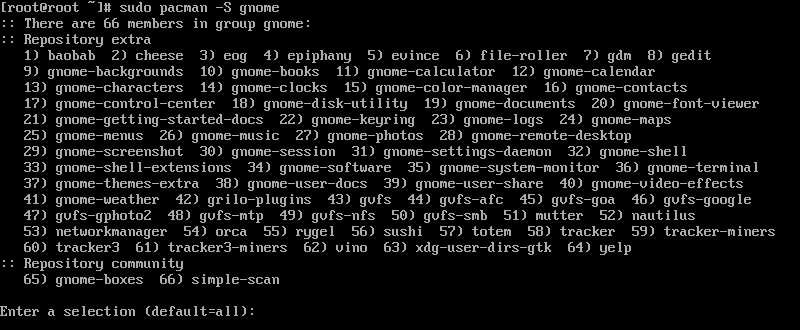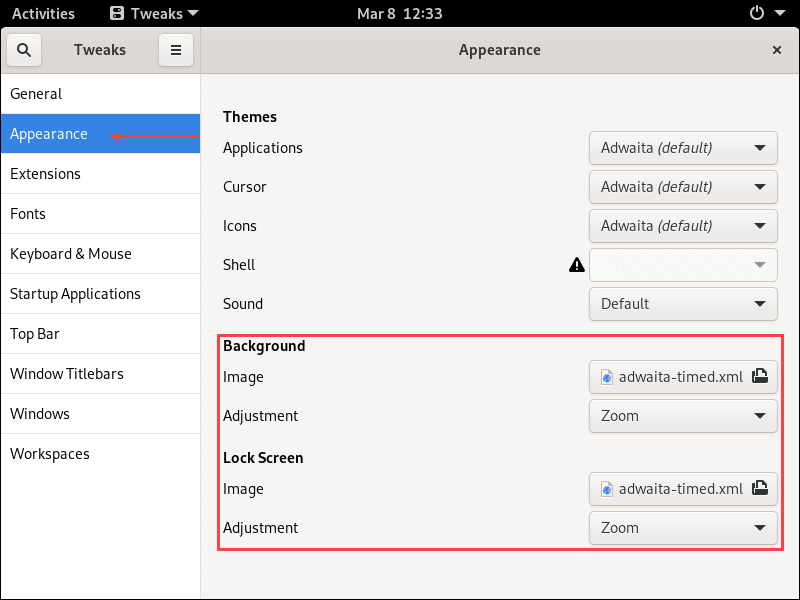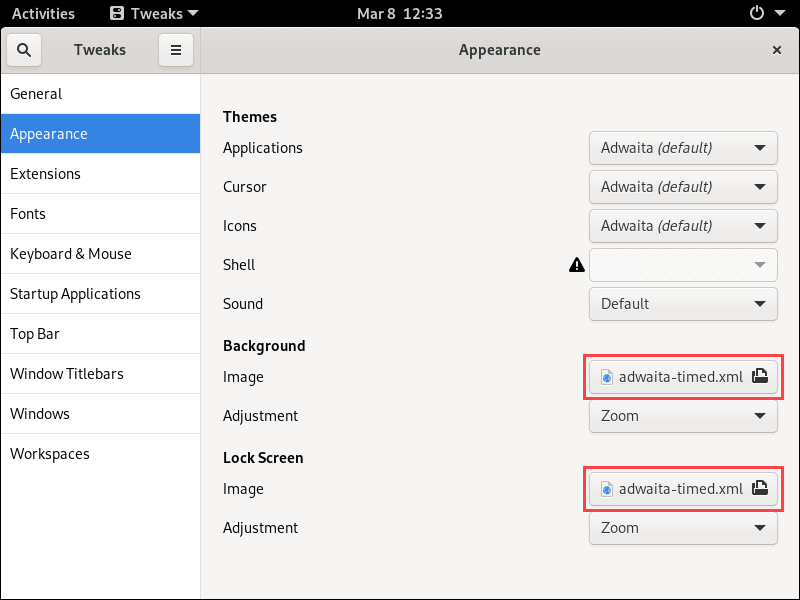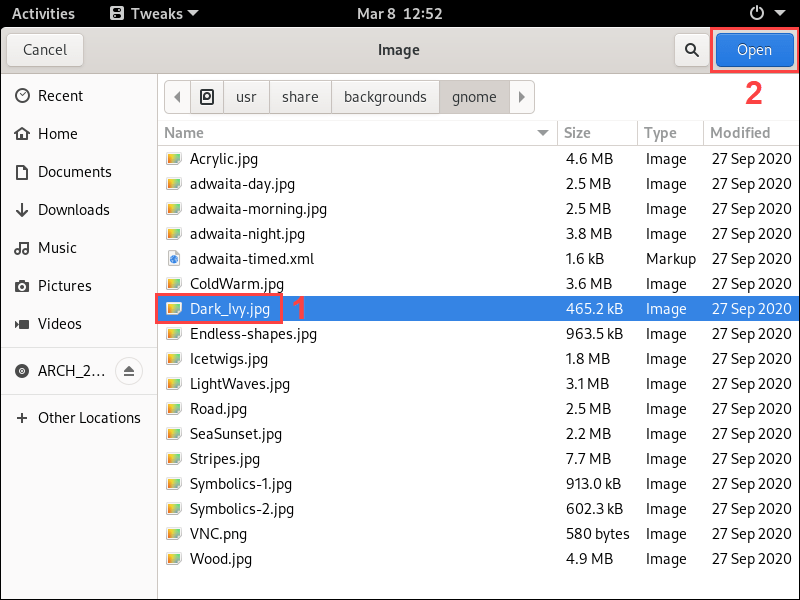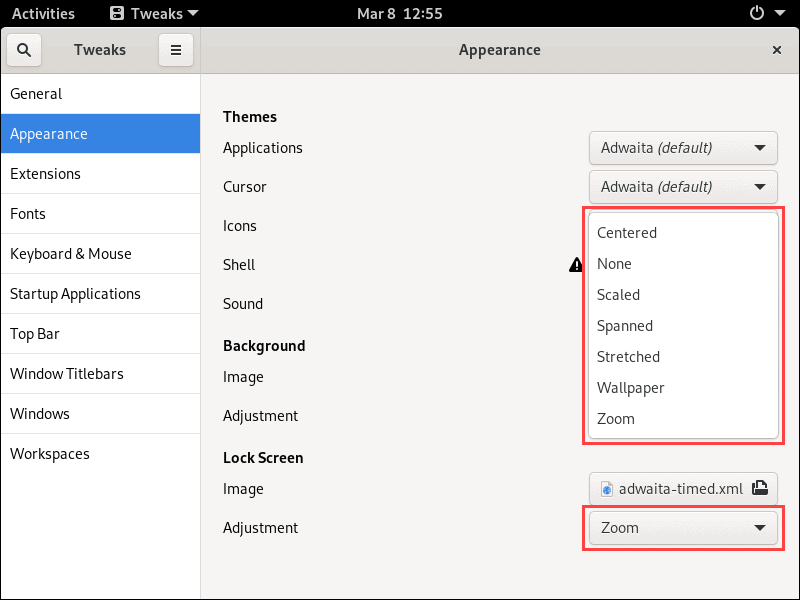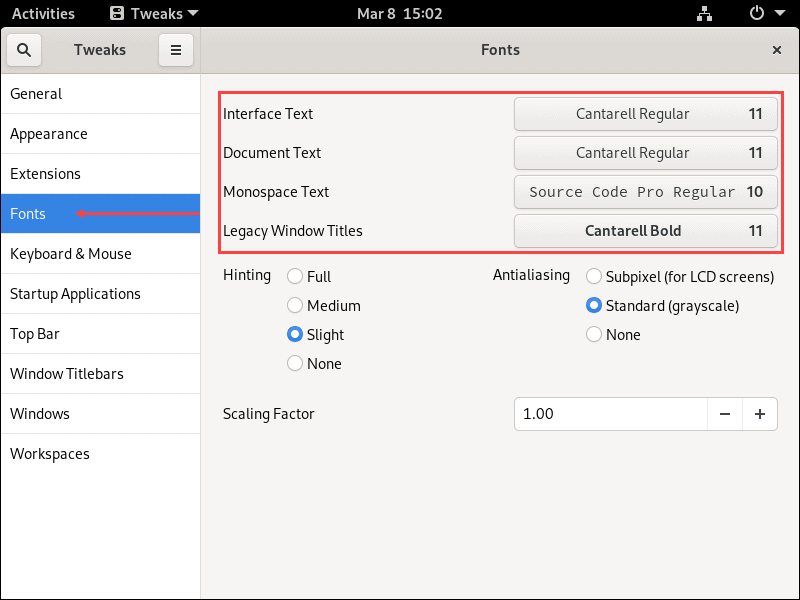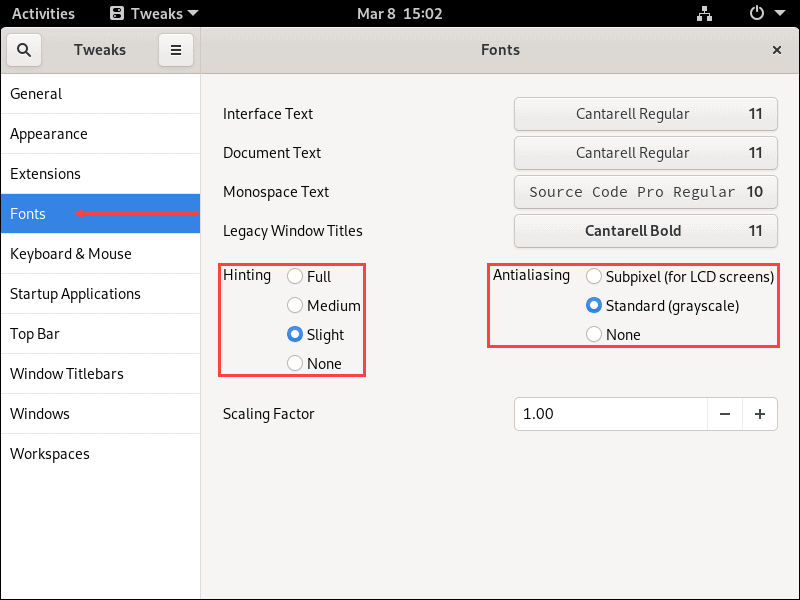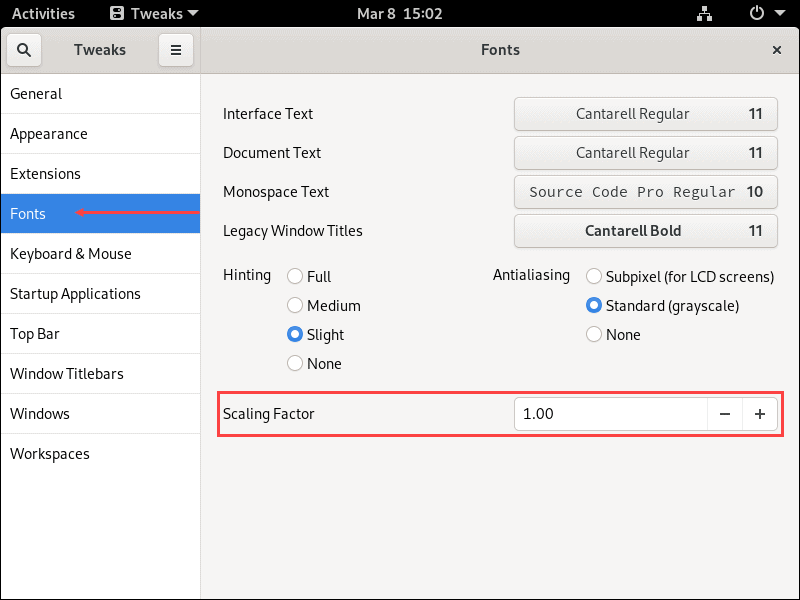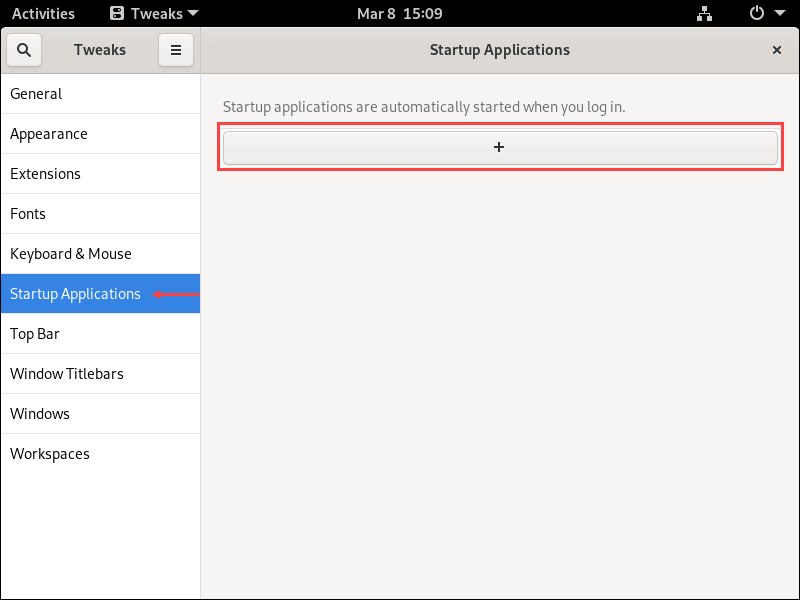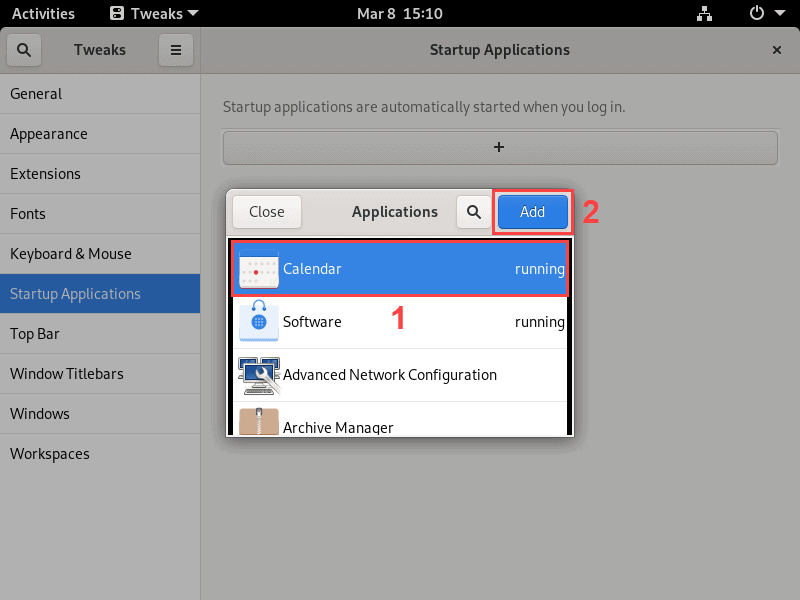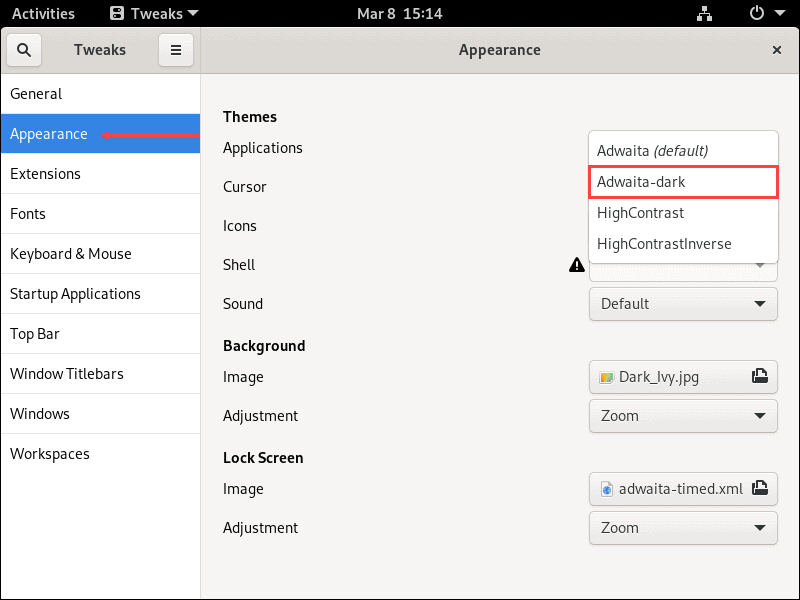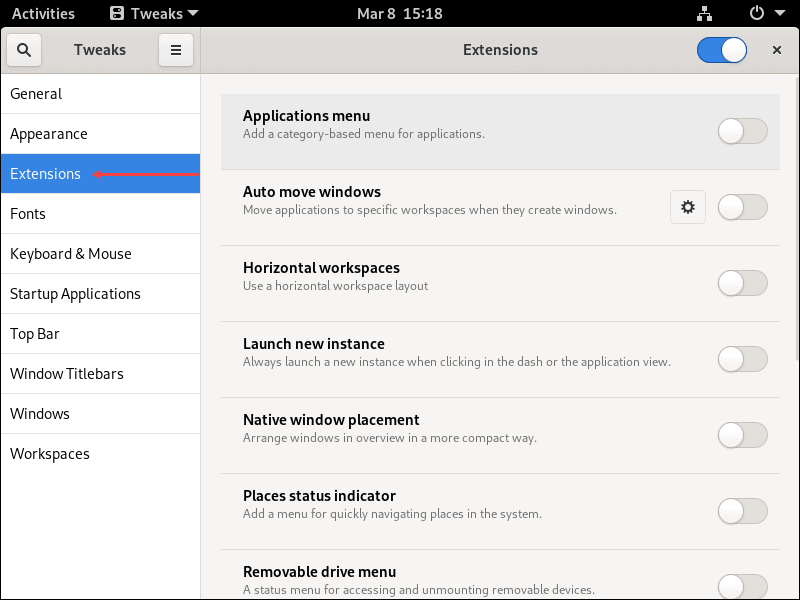- How to Install GNOME Desktop On Arch Linux
- Create User Account
- Update Arch Linux
- Install GNOME Desktop on Arch Linux
- Conclusion
- How to Install GNOME in Arch Linux
- Arch Linux GNOME Installation Guide
- Step 1: Update Arch Linux
- Step 2: Install X Window System (Xorg)
- Step 3: Install GNOME Desktop Environment
- Step 4: Start and Enable gdm.service
- Alternate Option: Choose a DM (Display Manager)
- Step 5: Reboot the System
- Step 6: Install Applications
- Customize GNOME Desktop Environment with GNOME Tweak Tool
- Change Background and Lock Screen Wallpaper
- Disable Animations
- Customize Fonts
- Add Applications to the Startup
- Enable Dark Theme
- Enable Extensions
How to Install GNOME Desktop On Arch Linux
As you are aware, Arch Linux follows a minimal installation method to adhere to the KISS principle. However, this minimal installation may not be suitable for all, especially those who like to use the graphical desktop.
There are lots of graphical desktop environments available for Arch Linux. But, one such famous desktop environment is Gnome Desktop.
Here, we will see how to install GNOME desktop on Arch Linux.
Create User Account
For security reasons, logging in as a regular user is recommended instead of the privileged user (root). So, create a regular user and then enable sudo access for that user.
useradd -m regular_user passwd regular_user usermod -aG wheel regular_user echo "%wheel ALL=(ALL) NOPASSWD: ALL" | tee -a /etc/sudoers.d/regular_user
Update Arch Linux
First, you will need to update Arch Linux to the latest version on your system.
Install GNOME Desktop on Arch Linux
The base GNOME desktop and integrated application are part of the gnome group. gnome-extra contains GNOME applications like email client, IRC client, GNOME tweaks, and games.
GNOME also includes GNOME display manager (GDM) that automatically starts GNOME desktop on the bootup.
So, first, install the gnome and gnome-extra groups with the pacman command.
pacman -Sy gnome gnome-extra
. . . . . . 52) sushi 53) totem 54) tracker 55) tracker-miners 56) tracker3-miners 57) vino 58) xdg-user-dirs-gtk 59) yelp :: Repository community 60) gnome-boxes 61) simple-scan Enter a selection (default=all): all # Choose the repository to get the required library resolving dependencies. :: There are 2 providers available for libjack.so=0-64: :: Repository extra 1) jack2 2) pipewire-jack Enter a number (default=1): 1 . . . . . . gnome-shell-1:41.3-1 gnome-shell-extensions-41.1-1 gnome-software-41.3-1 gnome-system-monitor-41.0-1 gnome-terminal-3.42.2-1 gnome-user-docs-41.1-1 gnome-user-share-3.34.0-2 gnome-video-effects-0.5.0+4+g9554041-2 gnome-weather-41.0-1 grilo-plugins-1:0.3.14-1 gvfs-1.48.1-1 gvfs-afc-1.48.1-1 gvfs-goa-1.48.1-1 gvfs-google-1.48.1-1 gvfs-gphoto2-1.48.1-1 gvfs-mtp-1.48.1-1 gvfs-nfs-1.48.1-1 gvfs-smb-1.48.1-1 mutter-41.3-2 nautilus-41.2-1 orca-41.2-1 rygel-1:0.40.3-1 simple-scan-40.7-1 sushi-41.0-1 totem-3.38.2-1 tracker-2.3.6+7+gb27396252-3 tracker-miners-2.3.5+2+gec09554af-4 tracker3-miners-3.2.1-2 vino-3.22.0+74+g7a95e10-1 xdg-user-dirs-gtk-0.10+9+g5b7efc6-3 yelp-41.2-1 Total Download Size: 513.13 MiB Total Installed Size: 2254.87 MiB :: Proceed with installation? [Y/n] Y qemu-6.2.0-2-x86_64 11.1 MiB 3.87 MiB/s 00:03 [####################################################################] 100% adwaita-icon-theme-41.0-1-any 10.7 MiB 9.28 MiB/s 00:01 [####################################################################] 100% ffmpeg-2:4.4.1-1-x86_64 10.4 MiB 9.17 MiB/s 00:01 [####################################################################] 100% libibus-1.5.25-5-x86_64 9.6 MiB 8.28 MiB/s 00:01 [####################################################################] 100% . . . . . . (18/22) Probing GTK3 input method modules. (19/22) Updating icon theme caches. (20/22) Updating GTK4 module cache. (21/22) Reloading GVFS config. (22/22) Updating the desktop file MIME type cache.
Then, enable GNOME display manager to auto-start at the system bootup.
Finally, reboot the system.
Post the server reboot login with a regular user account.
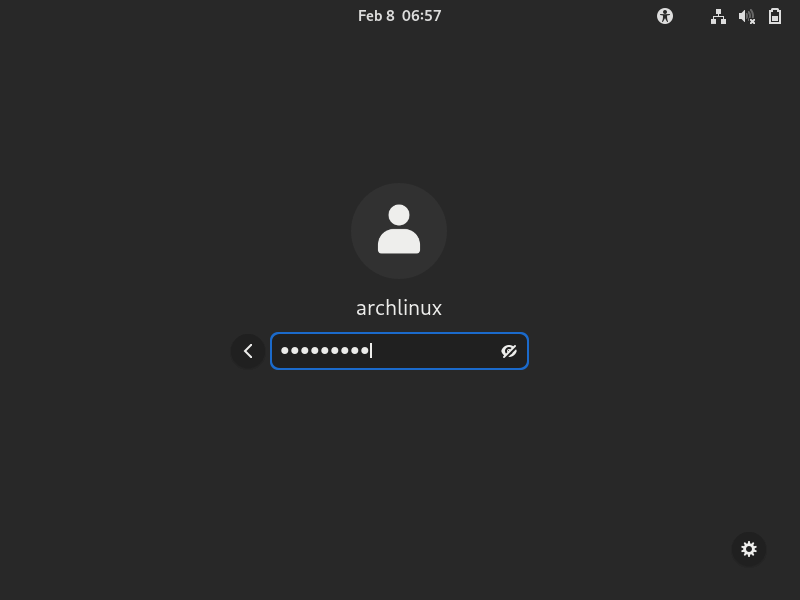
Conclusion
That’s All. I hope you have learned how to install GNOME on Arch Linux.
How to Install GNOME in Arch Linux
Arch Linux remains one of the most popular Linux distributions owing to its versatility and low hardware requirements. The command line environment can, however, be challenging for beginners.
GNOME is a desktop environment offering a stable GUI solution for Arch Linux, making it more convenient to use.
In this tutorial, we offer a step-by-step guide to installing and setting up GNOME in Arch Linux.
Arch Linux GNOME Installation Guide
Follow these steps to install GNOME on Arch Linux:
Step 1: Update Arch Linux
Read up on the latest version of Arch Linux on the official website. Make sure that no manual intervention is required to upgrade from your current version.
1. To apply the update, use:
2. Reboot the system for the update to take effect:
Step 2: Install X Window System (Xorg)
1. Start the X Window System (Xorg) install process with:
sudo pacman -S xorg xorg-server2. Press Enter to select all of the components available for installation.
3. When prompted, type Y and press Enter to proceed with the install process.
Note: If you are running an Ubuntu system, learn how to install a GUI on Ubuntu.
Step 3: Install GNOME Desktop Environment
1. Install the GNOME desktop environment by running the following command:
2. Press Enter to select all of the available components.
4. If you are missing any dependencies, GNOME offers a choice of provider for the download. For each prompt, select the appropriate provider and press Enter to proceed.
5. When prompted, type Y and press Enter to proceed with the installation.
Step 4: Start and Enable gdm.service
1. Once GNOME is fully installed, start the gdm service by using:
sudo systemctl start gdm.serviceStarting the gdm service enables the GNOME GUI.
2. Log in with your account credentials and open a terminal window.
3. Use the following command to set the gdm service to run on system boot:
sudo systemctl enable gdm.serviceAlternate Option: Choose a DM (Display Manager)
Arch Linux also allows you to use other popular display managers, such as LXDM, MDM, SDDM, or XDM.
1. Start by installing the display manager you want to use. For instance, install LXDM by using:
2. When prompted, type Y and press Enter to proceed with the install process.
3. Stop the currently-running gdm service by using:
sudo systemctl stop gdm.service sudo systemctl disable gdm.service4. Start the LXDM display manager with:
sudo systemctl start lxdm.service sudo systemctl enable lxdm.serviceStep 5: Reboot the System
Reboot your Arch Linux system for the changes to take effect:
Step 6: Install Applications
Use the pacman package manager to install any additional applications you require. For instance, use the pacman command to install Firefox, VLC Player, and Leafpad:
sudo pacman -S firefox vlc leafpadCustomize GNOME Desktop Environment with GNOME Tweak Tool
To customize the GNOME desktop environment, install the GNOME Tweaks application.
1. To install GNOME Tweaks, run the following command:
sudo pacman -S gnome-tweaks2. Open the Tweaks application to start setting up your version of GNOME.
Change Background and Lock Screen Wallpaper
1. Under the Appearance tab, find the Background and Lock Screen sections:
2. Click the Image button to open the image selection window:
3. Once you select the image you want to use, click Open to confirm:
4. Use the Adjustment dropdown menu to select the way you want the new background to fit:
Disable Animations
Navigate to the General tab to turn the animations on or off by using the toggle on the right-hand side:
Customize Fonts
1. Use the Fonts tab to select which fonts are used for the interface, documents, monospace text, and legacy window titles.
2. You can also change hinting and antialiasing settings.
3. Finally, scale on-screen text up and down using the Scaling Factor setting.
Add Applications to the Startup
1. The Startup Applications tab lets you set up applications that start on system boot by clicking the + button:
2. Select the application you want to add from the list and click Add to confirm.
Enable Dark Theme
Under the Appearance tab, open the Applications dropdown menu in the Themes section. Select the Adwaita-dark option to switch to the dark theme.
Enable Extensions
Switch GNOME extensions on or off under the Extensions tab.
Add new extensions by visiting the GNOME extensions website.
After following this tutorial, you should have a fully set-up and customized copy of Arch Linux using the GNOME display manager.

